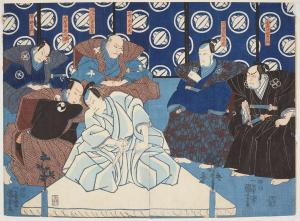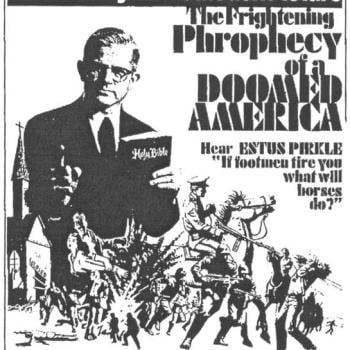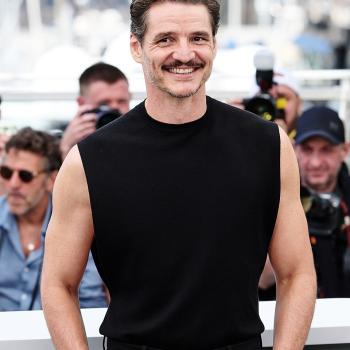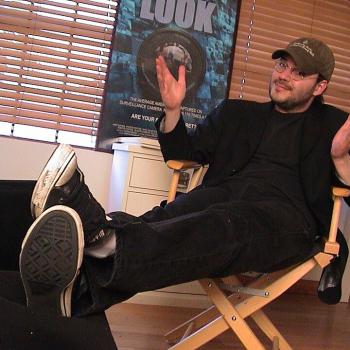
The more things change…
Source: picryl
In 1921 at eleven years old, Yoshio Kodama was unhappily living with his sister and her husband in Korea, beating steel into sheets at a nearby mill. By 1929, he had attempted to hand the emperor a direct appeal for greater patriotism. Kodama was stopped by security forces, though that didn’t stop him from spending the better part of the next decade plotting (and occasionally succeeding in) assassinations against major political figures. By the early 50s, only 20 or so years since imperial guards slammed his boyish face into the ground for approaching Japan’s supreme leader, Kodama was among the most powerful political fixers in Japan. Fast forward to 1976 and a fascist porn actor flew a plane into Kodama’s house. But that’s beyond the scope of this essay.
Kodama’s buddy, Nobusuke Kishi spent the mid-1930s as the chief economic architect of the Japanese puppet state of Manchukuo. What that meant in practice was partnering with the founder of Nissan to impress locals into industrial and sexual slavery. After the war ended—and much like his friend—the Allies didn’t hold him long. By 1957, he was Japan’s prime minister, working hand-in-glove with Kodama and the newly established Liberal Democratic Party (which continues to govern Japan today).
Two fascist war criminals—one out front and one in the shadows—ruling post-Imperial Japan. Who woulda thunk it?
Well, the United States of America for one thing. But again, that’s beyond the scope of this essay.
Instead, I’d like to consider one of Akira Kurosawa’s lesser-appreciated films, The Bad Sleep Well (1960), a movie about corporate corruption and vengeance in post-war Japan made while Kishi was prime minister. When people do discuss the film, it’s often on account of its elaborate opening sequence, which concerns a ritzy wedding between the daughter of the Public Development Corporation’s vice president and that boss’s secretary, a man named Nishi (played by the inimitable Toshiro Mifune). Reporters dressed in gray rush in and, like a Greek Chorus, introduce the characters, whisper about scandals in the company, and generally provide some relief from the awkward toasts and strained smiles of those seated in the banquet hall. The sequence is indeed gorgeous and, on my first viewing, convinced me the cinematic arc ahead was destined to be a masterpiece.
Though it sets up the intrigue and for all its grandeur, the sequence I’ve never been able to forget comes a bit later. Nishi, it turns out, is the son of a man made to commit suicide, part of a limited hangout for a scandal within the Public Development Corporation. His quest is simple: revenge. He wants to punish and eliminate every corrupt coward who runs the company, hence his marrying his boss’s daughter—she’s (at least initially) no more than a way to get at the fat cats who killed his father. Part of Nishi’s plan is saving a lower-ranking official from a compeled suicide, turning him into a ghost who can haunt (and drive insane) another underling at the corporation. This faux-phantom, Wada (Kamatari Fujiwara) is unsure about whether to participate in this scheme, at least until Nishi takes him to his own funeral, where he listens in as his co-workers and boss publicly cry, even as they talk secretly about how good it is that he’s gone. His wife wails and his children are reduced to tears—his life meant something to them. His bosses mourn publicly but toast his demise in private. In that brief scene, Nishi assimilates him not only into his plan, but into his experience. Our hero becomes a necromancer, destroying and resurrecting a man on his quest to take down the dirty rotten system that murdered his father.
That scene captures the whole problem of post-war Japan. Like Kurosawa’s other quasi-noirs about life after the atom bomb [e.g., Drunken Angel (1948) and Stray Dog (1949)], The Bad Sleep Well is about the toxic combination of new and old, Eastern and Western produced (or accelerated) by the demise of Imperial Japan. Wada gets a Shinto funeral. Nishi’s father dies like a samurai for his daimyo. But the real prestige lies in classic industrial corruption clothed in suits and clouded by cigar smoke. It’s no accident that the company in question is the Public Development Corporation, a nasty blend of the public and private. Indeed, the whole thing feels like a distillation of Japan in 1960, a snapshot of the ultra-modern reformed fascist Kishi and the Yakuza powerbroking of a thug like Kodama. Nishi’s story for revenge is not simply Hamlet (as some have contended); it’s the concentration of rage at failed reform, Kurosawa’s dramatic strike at the jugular of US-backed corruption. In the 30s, Kishi sold Manchukuo out to Nissan—how much really changed?
As the title all but screams, the film ends on a dour note. The future wasn’t looking all that bright for Japan in 1960, at least not from Kurosawa’s perspective. And despite its electronics dominance in the 80s, much the same could be said now, with the Liberal Democrats, the party of Kishi and Kodama, still mostly unchallenged. For me, as a US citizen, it’s hard not to feel the parallels. The promise of the post-war moment obscured matters for some time; injustice (or chaos if you prefer for any von Trier fans out there) reigns. But the mask is now all but ripped off. What we did to Japan we now seem hellbent on doing to ourselves. The movie’s name may as well by our mantra, a slogan for 2022, though with a slight addition: only the bad sleep well.













